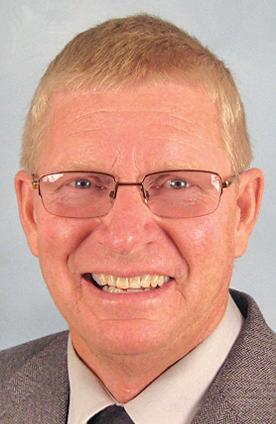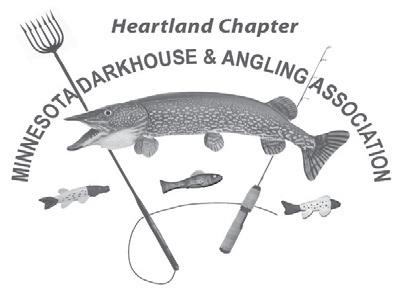
4 minute read
Public Comment Sought for Morrison County’s Hazard Mitigation Plan

Morrison County has completed an updated draft of the of its Hazard Mitigation Plan (HMP) and is now seeking public feedback. Like all Minnesota counties, Morrison County is vulnerable to a variety of potential natural disasters, such as tornadoes, windstorms, severe winter storms, flooding, drought, and extreme temperatures, which threaten the loss of life and property in the county. Planning for natural disasters minimizes the impact of these events that can cause vast economic loss and personal hardship.
Advertisement
All county residents, as well as other interested stakeholders (those in neighboring counties, tribal nations, or working with affected agencies) are strongly encouraged to review and offer feedback on the interactive website, PDF of the draft plan, and proposed local mitigation actions. The review and comment period is open for a period of 15 days through February 6, 2023. The public can access the plan using the following links:

Morrison County HMP Website (z.umn.edu/ MorrisonHMP)
Mitigation Action Charts (https://morrison-county-hmp-umn.hub.arcgis.com/pages/mitigation-actions) Public Comment Feedback Form (https://z.umn.edu/MorrisonSurveyHMP)
The Morrison County HMP is a multi-jurisdictional plan that covers Morrison County, including the cities of Bowlus, Buckman, Elmdale, Flenburg, Genola, Harding, Hillman, Lastrup, Little Falls, Motley, Pierz, Randall, Royalton, Sobieski, Swanville, and Upsala. The Morrison County HMP also incorporates the concerns and needs of townships, school districts, and other stakeholders participating in the plan.
Update of the plan has been under direction of Morrison County Emergency Management in cooperation with U-Spatial at An Equal Opportunity Employer the University of Minnesota Duluth and representatives from county departments, city and township governments, school districts, and other key stakeholders. Together, the planning team worked to identify cost-effective and sustainable actions to reduce or eliminate the longterm risk to human life or property from natural hazards. Examples include improvement of roads and culverts that experience repetitive flooding; construction of safe rooms in areas where residents and visitors are vulnerable to tornadoes and severe storm events; burying powerlines that may fail due to heavy snow, ice or wind storms; ensuring timely emergency communication to the public through warning sirens and mass notification systems; and conducting public awareness and education campaigns to help people be prepared to take safe action before, during, or following a hazard event.
Hazard mitigation planning helps Morrison County and other jurisdictions protect their residents. Working with local communities through the process helps identify vulnerabilities and develop strategies to reduce or eliminate the effects of a potential hazard. In addition, increasing public awareness of natural disasters and encouraging personal preparedness helps to create a community that is resilient to disaster, and breaks the cycle of response and recovery. Updating the plan further allows Morrison County and its jurisdictions to be eligible to apply for future FEMA Hazard Mitigation Assistance grant program funding for projects that help to reduce or eliminate the impacts of future natural hazard events.
Community feedback is vital to the success of the plan. Morrison County invites public review and feedback of the draft plan prior to submitting it to the State of Minnesota and the Federal Emergency Management Agency (FEMA) for review.
Feedback may be provided via the online comment forms or directly to Morrison County Emergency Management.
For more information, contact Victoria MacKissock, Morrison County Deputy Emergency Management Director at 320-6320195 or email: victoriam@ co.morrison.mn.us.
The new session of the Minnesota Legislature is already in its fourth week, and it’s a start that I’ve not witnessed before during my time at the Capitol. Usually, not much happens during the first few weeks on the floor of the House or the Senate because it takes time for prospective bills to work their way through the committee process and be ready for floor action.
Not so this year, as the first bill, one pertaining to tax conformity, was passed during week two. Not to be confused with tax reductions, this bill simply conformed Minnesota’s tax code to the IRS in the area of exempting state income tax on funds received mainly from various federal pandemic programs. The bill was put on a fast track to allow time for the Dept of Revenue to update its software in time for this year’s tax filing.
A bill that was the DFL majority’s top priority, House File (HF 1), was also fast tracked through committees and heard on the floor this past week. It’s the Protect Reproductive Options Act, the bill dealing with abortion. It was passed after four hours of emotional debate on a nearly straight party-line vote. One DFLer joined all Republicans in voting against the bill, but it passed on a 69-65 vote. Supporters of the bill say it enshrines these protections in state law, while Republicans said it goes way beyond that, calling it the most liberal abortion law in the nation. The bill guarantees the right to abortion through all nine months of pregnancy, with no age restrictions, and no assurance that parents of minors must be notified.
The bill is expected to be heard in the Senate this week.
Letter to the Editor
Another bill that will surely create strong debate is scheduled to be heard soon in the House. It’s HF 7, a bill that mandates that, by the year 2040, all electricity utilized by Minnesota residents come from renewable sources. I think this bill moves the needle too far, too fast. We are a long way from being able to rely strictly on wind turbines and solar panels for our total electric generation capacity. Think of our weather conditions during this month of January, with very little sunshine and not much wind, either. On many of these gray winter days, renewables generated little power, with the vast majority coming from coal and natural gas.
We as a society rely heavily on electricity. We can’t put gas in our cars or keep our business systems functioning without power. And here in Minnesota, the loss of electricity could become a life-threatening situation. I think we need to maintain a variety of generation sources. Renewable are fine as part of that mix, but because they are intermittent, renewables need to be backed up. And, until we have cost-effective and efficient battery storage of power, we need to maintain the baseload capability that coal, natural gas, and nuclear provide.
On the topic of ag and farming, I serve as the lead Republican on the Agriculture Finance and Policy Committee. Our first few meetings have mainly dealt with updates on the various programs overseen at the state level by the Dept. of Ag. New this year is that broadband has been added to the committee’s jurisdiction. We heard a report from the Office of Broadband on how $100 million in grants was recently awarded, with another $67 million to soon follow. Several projects in our district were on the list, including one for southern Pope County, one in western Stearns County, and one including Stevens and Grant counties.
You can always call my office at (651) 296-4317, my home phone at (320) 239-2726 or email me at rep.paul.anderson@house.mn if you need additional information.






